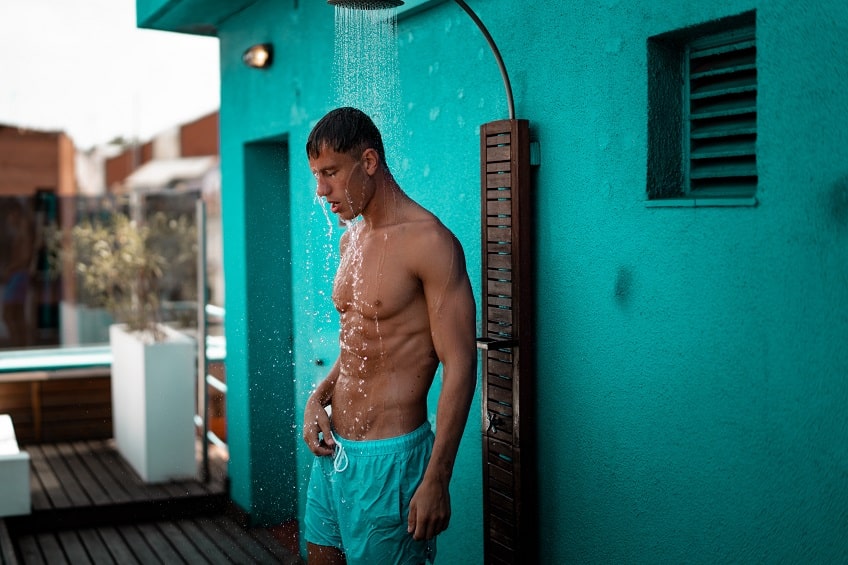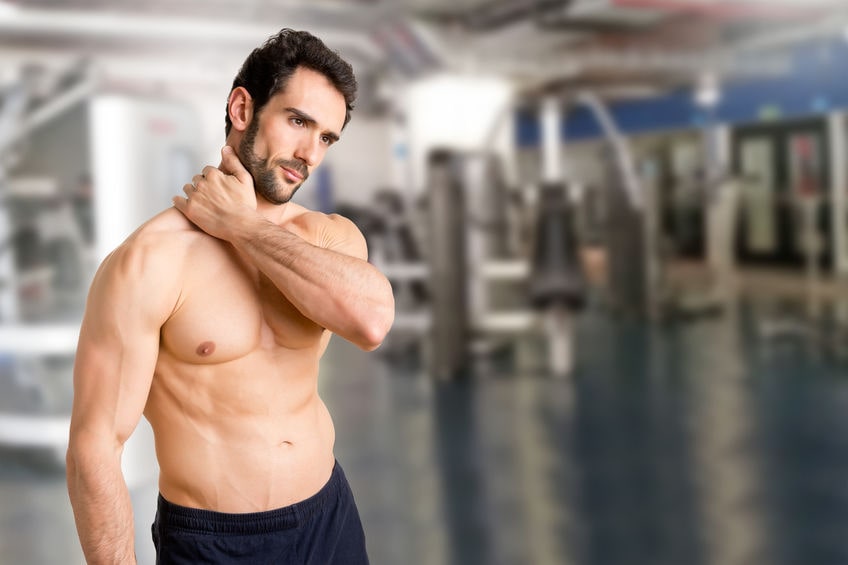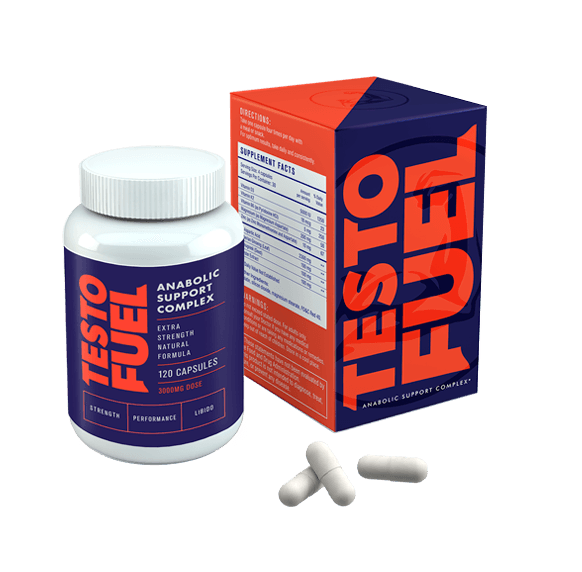
Does the idea of stepping into a cold shower make your spine tingle? You’re not alone – it’s usually the last thing most people would find relaxing.
But, according to science, there are more than a handful of health benefit to braving the chill factor. Cold showers can be invigorating, healing, and even improve hormone health.
People have used cold showers for centuries – sometimes for their therapeutic effect. Now, with the advancement of modern research, we can see why a lot of the old anecdotes survived.
Scientists have found evidence showcasing how health promoting cold water can really be.
In this article, we’ll look at eight health benefits of taking the plunge. The best part is you don’t have to shiver through your entire shower either.
We’ll go over the techniques and how to get started at the end.
8 Health benefits of a cold shower

1. Improved immune system
Experts say a taking a cold shower has the power to boost your white blood cell count – the kind dedicated to fighting disease.
According to one study carried out in Amsterdam, people who took cold showers were almost 30% less likely to call in sick for work[1].
During the study, researchers examined over 3000 people, with one group experiencing 30-90 second bouts of cold water, and another test group taking a continual warm shower.
Over the next few months, the researchers saw that cases of calling in sick took a considerable cut among the cold shower group.
There were less reported absences, which was accredited to experiencing the intermittent bouts of cold water.
Interestingly, it might not be that the contrast between hot and cold stopped people getting ill.
While it’s believed cold showers do improve white blood cell count, they might also help you feel refreshed and alert when ill.
So, you could still get sick just as easily, but the symptoms don’t feel as intense.
2. Relieve depressive symptoms
Hydrotherapy is a holistic alternative to medicine for alleviating moderate symptoms of depression[2].
Cold water hitting the skin acts like a low-intensity form of mild shock therapy to the sensory cortex, sending millions of lightning fast electrical impulses to the brain.
The blue spot inside your brain becomes triggered, which creates a surging noradrenaline release.
As a result, your head can become clearer, alertness increases, and you feel a sharp energy boost.
Endorphins – aka feelgood hormones – are also released into the bloodstream, potentially improving your sense of happiness and wellbeing.
You might not even need to take a full 20-minute shower to experience these therapeutic effects either.
Finding the time for a five minutes of hydrotherapy, two to three times a week could be enough to benefit depressive symptoms says one clinical trial[3].
Do not use cold showers to treat depression if your doctor has given you specific medication. No advice in this article is intended to diagnose or treat any illness.
3. Increased mindfulness

We all know we could be more mindful. When you stop to think about it, a cold shower is the perfect place for it.
Many people practice mindfulness during cold showers as the temperature helps keep them in the moment.
It also presents an opportunity to focus on your breathing, as slow, deep breaths help to keep your body warm.
You can use cold showers as a mindfulness tool without taking an extended soaking.
Contrasting between hot and cold allows you to really focus on noticing the temperature change.
A fast five minutes of continual cold can help to center your thoughts in the middle of your usual morning routine.
4. Pain reduction
If you suffer from pain, swelling, or edema, stepping into a cold shower could offer relief.
Cold water contact causes blood vessels to contract, pulling in and reducing swelling. It might also slow down the speed of nerve impulse signals too.
When nerves can’t transmit these signals as quickly, it can result in a less intense perception of pain.
Experts say that cold water application can act like a local anesthetic[4].
Interestingly, when a team of researchers examined outdoor winter swimmers, they found spending time submerged in the chilly deeps helped relieve arthritis and fibromyalgia-related pain, as well as booster their mental wellbeing and vigor[5].
5. Better sports recovery
Ice baths have had a surge of popularity over the past decade.
All the best sports stars on the planet take the plunge, and according to a huge 2018 meta-analysis, they’re one of the best tools for accelerating sports recovery between sessions[6].
But, let’s face it – ice baths are neither cheap nor convenient. Most of us have access to a shower every day, but a bathing tub full of icy water is a stretch.
Fortunately, the cold water pumped out in our bathroom can still be beneficial.
Ditching your kit and jumping into a cold shower immediately post-exercise can work wonders for recovery[7].
The quicker your body can cool down, the faster it can get around to fixing other factors.
Cold water does the job of cooling down your skin, so your blood can be redirected back toward more vital stations.
It can carry nutrients around the body easier and you should feel more replenished and energized later in the day.

6. Improved circulation
Carrying on in a similar vein, cold showers can also improve circulation.
Cold water exposure causes vasoconstriction – aka the tightening of blood vessels.
As a result, the heart has to work harder to pump blood around your body.
Now, the heart is a muscle, and like all the other muscles in your body it can adapt to meet increased demands placed upon it.
Constantly pushing to drive blood through narrow vessels makes it stronger, much like how your biceps become stronger from lifting a heavy weight.
Plus, because blood needs to be pumped faster to carry oxygen needed to increase your body temperature, cold showers increase circulation in the short term too.
Improved circulation can offer a whole host of health benefits. It also lends a hand to exercise performance and recovery.
7. Boosted testosterone
Testosterone is the most important hormone in the male body.
With roles in everything from muscle building to mental health, maintaining healthy levels are key to a man’s wellbeing.
Cold showers are said to improve testosterone by instigating the release of luteinizing hormone, which then travels from the pituitary gland, to trigger testosterone production in the testes[8].
However, if you’re looking for effective ways to increase T production, exercise, reducing stress, and eating a well-balanced diet will probably be more beneficial.
8. Improved metabolism
Turning back the temperature tap might have the opposite effect on your metabolism.
Cold showers can cause increases in brown fat activation, hiking up how many calories are burned to keep you warm[9].
Scandinavian researchers even estimated that cold showers could help people lose at least nine pounds per year.
Brown fat can be very beneficial compared to white fat, because like we just mentioned, it burns calories.
Both share an inverse relationship too, meaning the more brown fat you have, the better chance you have of maintaining a healthy body composition.
Too much white fat – aka the kind that stores calories – on the other hand, puts you at higher risk of obesity.
It’s not recommended that you use cold showers as your sole plan for weight loss. Combine them with exercise and a calorie restricted diet for the best results.
How to do it
Now you’ve got the facts, you’ve vowed to face the chill factor. But, like pretty much every person on the planet, the idea of jumping into an icy jet of water is making your skin crawl.
We’re not reading your mind right now, it’s a natural in-build safety mechanism. So, we’ve come prepared with a protocol to get you started – it’s probably less intense than you’d think.
Temperatures around and just below 20-degrees Celsius seem to offer some of the best benefits. You shouldn’t need a whole half an hour of submersion to reap rewards either – five to fifteen minutes should do.
Contrast therapy – switching from hot to cold – seems to be extremely beneficial.
So, start with the shower at your usual warm temperature, and turn back the tap after a few minutes so you’re now being hit with cool water.
Concentrate on your breathing and stay under the cold stream for 30-90 seconds. After your brief period in the chill, turn the temperature back up to douse your body with warm water again.
Rinse and repeat after a few more minutes in the warm.
Eventually you’ll be conditioned enough to spend more time under the cold jet.
Taking a cold shower can sometimes be more about teaching your body to breathe properly and enjoying the process, more than actually putting up with the cold.
The final word
A lot of people find cold showers exhilarating and energizing – others just can’t stand them.
Either way, there’s more than a sprinkling of health benefits attached to bracing yourself and getting under one. Try working them into your routine at a steady pace and increase time as you go on.
Who says you need a steaming coffee to perk you up in the morning? Although it’s always nice to have one waiting for when you get out. Now that’s our kind of contrast therapy.
References
[1] https://www.ncbi.nlm.nih.gov/pmc/articles/PMC5025014/
[2] https://www.ncbi.nlm.nih.gov/pubmed/17993252/
[3] http://www.sciencedirect.com/science/article/pii/S030698770700566X
[4] https://www.ncbi.nlm.nih.gov/pmc/articles/PMC4049052/
[5] https://www.ncbi.nlm.nih.gov/pubmed/15253480/
[6] https://www.frontiersin.org/articles/10.3389/fphys.2018.00403/full
[7]https://www.ncbi.nlm.nih.gov/pmc/articles/PMC4049052/
[8] http://www.circumpolarhealthjournal.net/index.php/ijch/article/download/17474/19822
[9] https://www.npr.org/templates/story/story.php?storyId=102964807&t=1574872795879




Leave a comment